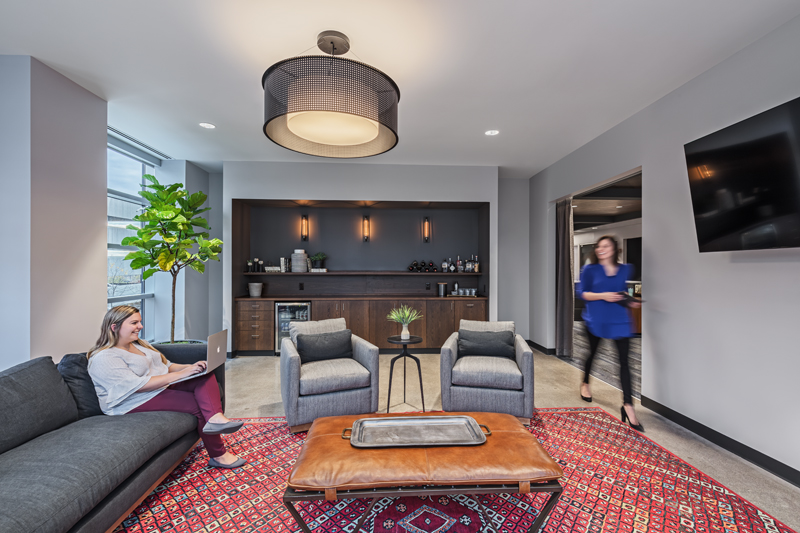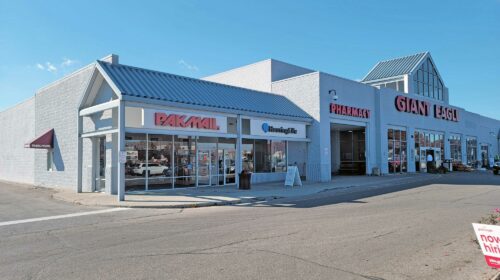The Office of Tomorrow
The pandemic has shone a light on both the positive and negative attributes of remote work. Employees have demonstrated that they can work from home successfully and their demand for flexibility seems heard as more employers adopt some permanent form of a remote work model.
However, for some, the monotony of Zoom meetings and feelings of isolation are notable impacts driving a desire to return to the office. So, what exactly are the elements associated with future offices that will be a draw to workers?
From spaces that provide employees with dedicated areas for head’s down focus work, to support spaces such as respite rooms that offer or an opportunity to decompress, to spaces like cafés that promote informal collisions with coworkers, it’s about designing spaces to be as flexible and adaptable as possible, say Tamra Fuscaldo and Kaitlin Kingrey of the Interior Design team for MA Design .
Future offices will be cultural hubs, emphasizing collaboration and the well-being of the individual, they added.
“A lot of people have been working from home so long, and they’re used to taking that mental break on the couch and just putting their feet up and just relaxing, and they don’t have a space in the office to do that when they need to do that,” explained Fuscaldo.
“There is an extrovert and an introvert in all of us, and sometimes we need to be an extrovert, sometimes we need to be an introvert, so being able to create those hybrid spaces, not only from a work function standpoint but also from a collaboration and an energized spaces concept,” she added.
Workers have been limited by the physical space of their homes, added Kingrey.
“For me, I live in a 1,400 square foot house. I have three bedrooms, and my husband also works from home, so really, my workspace is very, very limited. I don’t have the opportunity to get up and work at a real desk or get a change of pace. I’m kind of confined by my physical space here, so if we can provide an office environment that is more appealing and provides you more options, that’s immediately a more desirable scenario,” she said.
Matt Gregory, senior vice president of NAI Ohio Equities, who specializes in office sales and leasing, agrees with Kingrey.
“Office tenants will be looking at their space as an extension of their culture, not just a place to do business,” said Gregory.
Modern amenities such as cafés, lounges, outdoor terraces and common areas that allow employees to untether from their desks and move about the office are highly desired, in addition to proximity to restaurants, fitness centers and outdoor spaces, he added.
However, some trends seem to be catching on in the Midwest faster than others.
“In the Midwest, there is still a hesitancy to move from owning to accessing. Most of our client’s employees feel that they still want to “own” a space, a desk, or an office, whereas on a more national level the conversation emerging from the pandemic, and as we move to the endemic stage of our relationship with COVID, is one of accessing the space they need to work only,” explained futurist Mark Bryan of MA Design.
He added that the coasts have been moving toward smaller, shared, hoteling-type spaces.
Employees say that they want to connect with values, experiences and needs-based services over just a space to work in, said Bryan. In two workplace surveys conducted by MA Design at the end of 2021, flexibility in space and schedule were requirements for employees not to leave the companies they work for, he continued.
“In the Central Ohio market, we’ve seen a lot of employers who are incentivizing their workers in new and unique ways to encourage them to spend more time in the office. This includes offering dedicated office space to those that are coming into the office a specified number of days a week, where those under the threshold are using shared space,” explained Gregory.
“One thing is certain, offices aren’t going away; they’re adapting,” he concluded.




